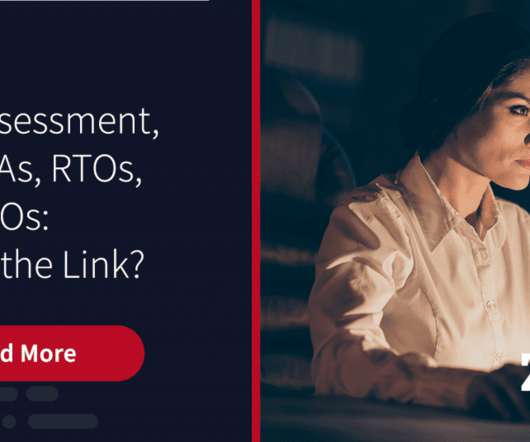More Than Meets the Eye: The Hidden Benefits of BC Planning
MHA Consulting
DECEMBER 8, 2022
Related on BCMMETRICS: Don’t Give Up the Ship: Demonstrating the Benefits of Rigorous Crisis Management Training Benefits That Go Beyond BC The main purpose of a business continuity management (BCM) program is to help an organization get through disruptions with the least possible impact to its operations, reputation, stakeholders, and bottom line.














Let's personalize your content